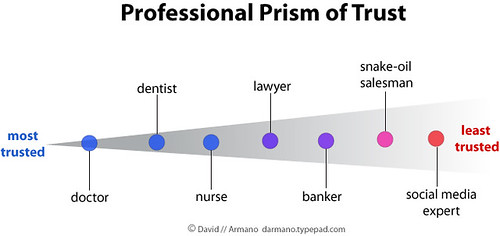The Trading Post Newspaper Bites The Dust
Killed by the internet and the growth of online shopping.
In the space of a few years this iconic print publication has seen its usage decimated.
But it's online version has skyrocketed in popularity. The Trading Post lives on, online.
The publication's readership dropped by one third to 469,000 in the last year.
But tradingpost.com.au, which launched in 1996, averages 1.8 million unique visitors a month. The publication's mobile site, launched last year, attracts around 140,000 visitors each month.
In the past two years, The Trading Post's number of print ads fell by 70% but the number of ads placed on tradingpost.com.au grew by 30%.
The lesson for your business... stay vigilant of trends. Your clients want an easy life. They will take whatever option they think will make it easiest for them.
Of course quality matters. But people want innovation, ease of use... and quality.
Labels: local marketing, market trends, marketing, marketing online



